Behind the Targets? The Case for Coherence in a Multi-Scalar Approach to Carbon Action Plans in the Transport Sector
Abstract
:1. Introduction
- Only 38% of authorities had declared an emergency with no target or pathway;
- Only 15% of authorities were in the process of setting targets;
- Only 47% of authorities had set a target. However, of these, 41% were for emissions only by the local authority’s own activities, with 59% being area-wide targets;
- Only 8% set targets for the transport sector.
- Budget coherence: Are the budgets aligned across authorities and scales?
- Accounting coherence: What gets counted where?
- Policy coherence: How are budgets aligned with the capacity to act?
2. Materials and Methods
3. Translating the Paris Agreement to the UK Transport Sector
4. Translating National Sectoral Targets to Subnational Scales
4.1. Subnational Government in the UK
- National government (UK, Scotland, Wales and Northern Ireland), which has a mix of competencies on tax and fiscal policy which applies across the four nations (including England) but where transport and planning policies are largely managed separately [41].
- Sub-National Transport Bodies, as regional governance in the UK has had a mixed history [42], with regional planning being a feature of the early 2000s but abolished in England and Wales by 2010, for example. In 2019, Transport for the North was established as the first statutory Sub-National Transport Body, covering 20 local authorities in the North of England to conduct strategic planning for, among other elements, new infrastructure. While not originally conceived with a carbon management role, this is currently being developed [43]. Other non-statutory subnational transport bodies exist.
- Combined authorities represent clusters of local authorities that have formal governance structures to work together, based initially around the logic of shared travel to work areas which defined the metropolitan counties up to their abolishment in the 1980s. Other forms of combined authority are now being set up, and many also now have elected mayors, who are delegated some powers [44].
- Shire counties are typically larger rural counties which are comprised of district authorities. Most of the transport planning powers sit with the shires.
- Unitary authorities are typically, but not exclusively, smaller cities which do not neatly fit within shire boundaries or which have been separated out in local government reorganizations. Combined authorities are made up of an aggregation of unitary authorities.
4.2. Coherence in Carbon Management for Transport
- Budget coherence concerns budgets as a mechanism through which the sum of the actions of different actors meet the national goals;
- Accounting coherence is a means through which questions about what gets counted where are resolved to align actions between different levels of government;
- Policy coherence considers the relationship between the budget and accounting coherence and the policy competencies to act at different spatial scales.
4.2.1. Budget Coherence
4.2.2. Accounting Coherence
- A territorial-based emissions approach where the place in which the emissions occur is the basis for accounting. In transport, this means assigning the emissions to where the movement occurs as a proxy for where fossil fuels are used.
- A production-based approach where sources of production are assigned the emissions, no matter where the end consumption is. In transport, for example, this would assign emissions to residents of an area irrespective of how much of their emissions burden is within that area.
- A consumption-based approach, which assigns the emissions associated with the whole consumption chain (including imports) to the place where consumption occurs.
4.2.3. Policy Coherence
5. Conclusions
- Budget coherence, where the gap between framings of what the Paris Agreement means are creating radically different ambition levels. Coupled with this are inconsistencies even within areas that have budgets as well as between places that do and do not have any form of budgeting. There must, at the very least, be some form of budgeting at a subnational scale below that of devolved administrations.
- Accounting coherence, as accounting at the smaller scales of local government alone appears too limited in managing the full range of carbon impacts from transport. Carbon accounting coherence in transport significantly improves at a combined authority, city region or shire county scale, and there are still important flows at a sub-national authority scale.
- Policy coherence, because of the patchwork of powers and structures across the UK, there is no one prescription for how this will work. A multi-scalar approach seems, therefore, both inevitable and appropriate. It is difficult to envisage policy coherence, however, without agreement over how much action is needed and what needs to be counted where, as set out in the budget and accounting coherence.
Author Contributions
Funding
Institutional Review Board Statement
Informed Consent Statement
Data Availability Statement
Acknowledgments
Conflicts of Interest
References
- IPCC. Global Warming of 1.5C. An IPCC Special Report on the Impacts of Global Warming above Pre-Industrial Levels and Related Greenhouse Gas Emission Pathways, in the Context of Strengthening the Global Response to the Threat of Climate Change, Sustainable Development and Efforts to Eradicate Poverty; Masson-Delmotte, V., Zhai, P., Pörtner, H.-O., Roberts, D., J.Skea, P.R., Shukla, A., Pirani, W., Moufouma-Okia, C., Péan, R., et al., Eds.; IPCC: Geneva, Switzerland, 2018. [Google Scholar]
- Anderson, K.; Broderick, J.F.; Stoddard, I. A Factor of Two: How the mitigation plans of ‘climate progressive’ nations fall far short of Paris compliant pathways. Climate Policy 2020. [Google Scholar] [CrossRef]
- Lebling, K.; Levin, K.; Jeffery, L.; Plechaty, D.; Ge, M.; Friedrich, J.; Waite, R. Climate Action Must Progress Far Faster to Achieve 1.5 C Goal, World Resources Institute. 2019. Available online: https://www.wri.org/blog/2020/11/climate-action-progress-2030-2050 (accessed on 26 March 2021).
- Rogelj, J.; Forster, P.M.; Kriegler, E.; Smith, C.J.; Séférian, R. Estimating and tracking the remaining carbon budget for stringent climate targets. Nature 2019, 571, 335–342. [Google Scholar] [CrossRef] [Green Version]
- Bache, I.; Bartle, I.; Flinders, M.; Marsden, G. Blame games and climate change: Accountability, multi-level governance and carbon management. Br. J. Politics Int. Relat. 2014, 17, 1–20. [Google Scholar] [CrossRef]
- Marsden, G.; Ferreira, A.; Bache, I.; Flinders, M.; Bartle, I. Muddling through with climate change targets: A multi-level governance perspective on the transport sector. Climate Policy 2014, 14, 617–636. [Google Scholar] [CrossRef] [Green Version]
- UNFCC. Decision 1/CP.21, Paris Agreement, United Nations Framework Convention on Climate Change; Document FCCC/CP/2015/10/Add.1; United Nations: Paris, France, 2015. [Google Scholar]
- Anderson, B. From long-term targets to cumulative emission pathways: Reframing UK climate policy. Energy Policy 2008, 36, 3714–3722. [Google Scholar] [CrossRef]
- Bache, I.; Reardon, L.; Bartle, I.; Flinders, M.; Marsden, G. Symbolic Meta-Policy: (Not) Tackling Climate Change in the Transport Sector. Political Stud. 2015, 63, 830–851. [Google Scholar] [CrossRef]
- Zhao, R.; Min, N.; Geng, Y.; He, Y. Allocation of carbon emissions among industries/sectors: An emissions intensity reduction constrained approach. J. Clean. Prod. 2017, 142, 3083–3094. [Google Scholar] [CrossRef]
- Steininger, K.W.; Meyer, L.; Nabernegg, S.; Kirchengast, G. Sectoral carbon budgets as an evaluation framework for the built environment. Build. Cities 2020, 1, 337–360. [Google Scholar] [CrossRef]
- Climate Emergency Declaration. Available online: https://climateemergencydeclaration.org/climate-emergency-declarations-cover-15-million-citizens/ (accessed on 25 March 2021).
- List of Councils Who Have Declared a Climate Emergency. Available online: https://www.climateemergency.uk/blog/list-of-councils/ (accessed on 30 January 2021).
- Willis, R. Too Hot to Handle? The Democratic Challenge of Climate Change; Bristol University Press: Bristol, UK, 2020. [Google Scholar]
- 2019 UK Greenhouse Gas Emissions, Provisional Figures, 26 March 2020, National Statistics. Available online: https://data.gov.uk/dataset/9a1e58e5-d1b6-457d-a414-335ca546d52c/provisional-uk-greenhouse-gas-emissions-national-statistics (accessed on 11 March 2021).
- Harstaad, H. Do Climate Targets Matter? The accountability of climate target setting in urban climate and energy policy. In Enabling Sustainable Energy Transitions: Practices of Legitimation and Accountable Governance; Sareen, S., Ed.; Palgrave MacMillan: London, UK, 2020; pp. 63–72. [Google Scholar]
- Balouktsi, M. Carbon metrics for cities: Production and consumption implications for policies. Build. Cities 2020, 1, 233–259. [Google Scholar] [CrossRef]
- Harris, S.; Weinzettel, J.; Bigano, A.; Källmén, A. Low carbon cities in 2050? GHG emissions of European cities using production-based and consumption-based emission accounting methods. J. Clean. Prod. 2020, 248, 119206. [Google Scholar] [CrossRef]
- Leão, E.B.S.; do Nascimento, L.F.M.; de Andrade, J.C.S.; de Oliveira, J.A.P. Carbon accounting approaches and reporting gaps in urban emissions: An analysis of the Greenhouse Gas inventories and climate action plans in Brazilian Cities. J. Clean. Prod. 2020, 245, 118930. [Google Scholar] [CrossRef]
- OECD Recommendation of the Council on Policy Coherence for Sustainable Development, OECD/LEGAL/0381. Available online: https://www.oecd.org/gov/pcsd/oecd-recommendation-on-policy-coherence-for-sustainable-development.htm (accessed on 21 May 2021).
- Levin, K.; Cashore, C.; Bernstein, S.; Auld, G. Overcoming the tragedy of super wicked problems: Constraining our future selves to ameliorate global climate change. Policy Sci. 2012, 45, 123–152. [Google Scholar] [CrossRef]
- Low, N.; Astle, R. Path dependence in urban transport: An institutional analysis of urban public transport in Melbourne Australia, 1956–2006. Transp. Policy 2009, 16, 47–58. [Google Scholar] [CrossRef]
- Sorenson, A. Taking path dependence seriously: An historical institutionalist research agenda in planning history. Plan. Perspect. 2015, 30, 17–38. [Google Scholar] [CrossRef]
- Sixth Carbon Budget, Climate Change Committee, London, 9th December. 2020. Available online: https://www.theccc.org.uk/publication/sixth-carbon-budget/ (accessed on 25 March 2021).
- Sixth Carbon Budget Dataset. Available online: https://www.theccc.org.uk/wp-content/uploads/2021/02/The-Sixth-Carbon-Budget-Dataset.xlsx (accessed on 25 March 2021).
- Connecting Leeds: Transport Strategy, Draft for Consultation. Available online: https://leedstransportstrategy.commonplace.is/overview (accessed on 25 March 2021).
- Tackling the Climate Emergency: Emissions Reduction Pathway Report, West Yorkshire Combined Authority and Leeds City Region Enterprise Partnership, July. Available online: https://www.westyorks-ca.gov.uk/media/4268/emission-reduction-pathways-report.pdf (accessed on 25 March 2021).
- Emissions of Carbon Dioxide for Local Authority Areas. Department of Business, Energy and Industrial Strategy. Available online: https://data.gov.uk/dataset/723c243d-2f1a-4d27-8b61-cdb93e5b10ff/emissions-of-carbon-dioxide-for-local-authority-areas (accessed on 25 March 2021).
- Wilson, R.E.; Anable, J.; Cairns, S.; Chatterton, T.; Notley, S.; Miller, J.D. On the estimation of temporal mileage rates. Transp. Res. E Logist. Transp. Rev. 2013, 60, 126–139. [Google Scholar] [CrossRef] [Green Version]
- Transport Outlook. International Transport Forum, Paris. 2019. Available online: https://www.oecd-ilibrary.org/transport/itf-transport-outlook-2019_transp_outlook-en-2019-en (accessed on 25 March 2021).
- Brand, C.; Anable, J.; Ketsopolou, I.; Watson, J. Road to zero or road to nowhere? Disrupting transport and energy in a zero carbon world. Energy Policy 2020, 139, 111134. [Google Scholar] [CrossRef]
- Government Takes Historic Step towards Net-Zero with End of Sale of New Petrol and Diesel Cars by 2030, Press Release from Department for Transport, Office for Zero Emission Vehicles and Department for Business, Energy and Industrial Strategy, 18th November. Available online: https://www.gov.uk/government/news/government-takes-historic-step-towards-net-zero-with-end-of-sale-of-new-petrol-and-diesel-cars-by-2030 (accessed on 25 March 2021).
- Gota, C.; Huezinga, C.; Peet, K.; Medimorec, N.; Bakker, S. Decarbonising transport to achieve Paris Agreement targets. Energy Effic. 2019, 12, 363–386. [Google Scholar] [CrossRef]
- Lefevre, J.; Briand, Y.; Pye, S.; Tovilla, J.; Li, F.; Oshiro, K.; Waisman, H.; Cayla, J.M.; Zhang, R. A pathway design framework for sectoral deep decarbonization: The case of passenger transportation. Clim. Policy 2021, 21, 93–106. [Google Scholar] [CrossRef]
- Creutzig, F. Evolving narratives of low-carbon futures in transportation. Transp. Rev. 2016, 36, 341–360. [Google Scholar] [CrossRef]
- Salon, D.; Sperling, D.; Meier, A.; Murphy, S.; Gorham, R.; Barrett, S. City carbon budgets: A proposal to align incentives for carbon friendly communities. Energy Policy 2010, 38, 2032–2041. [Google Scholar] [CrossRef]
- Vagnoni, E.; Morati, A. Local Government’s contribution to low carbon mobility transitions. J. Clean. Prod. 2018, 176, 486–502. [Google Scholar] [CrossRef]
- Tólon-Becerra, A.; Lastro-Bravo, X.B.; Sotelo-Navoporto, J.A. Territorial distribution of transport emission reduction targets from an environmental, economic and social viewpoint. Environ. Sci. Policy 2012, 16, 97–113. [Google Scholar] [CrossRef]
- Azevedo, I.; Horta, I.; Leal, V.M. Analysis of the relationship between local climate change mitigation actions and greenhouse gas emissions–Empirical insights. Energy Policy 2017, 111, 204–213. [Google Scholar] [CrossRef]
- Marsden, G.; Docherty, I. Governance of UK Transport Infrastructures. UK Government Office for Science. Future of Mobility: Evidence Review; Government Office for Science: London, UK, 2019. Available online: https://assets.publishing.service.gov.uk/government/uploads/system/uploads/attachment_data/file/780871/governance.pdf (accessed on 25 March 2021).
- MacKinnon, D.; Shaw, J.; Docherty, I. Diverging Mobilities: Devolution, Transport Policy and Innovation; Elsevier Science: Oxford, UK, 2008. [Google Scholar]
- MacKinnon, D.; Shaw, J. New state spaces, agency and scale: Devolution and the regionalisation of transport governance in Scotland. Antipode 2010, 42, 1226–1252. [Google Scholar] [CrossRef]
- Marsden, G. The Role of Sub-National Transport Bodies in Carbon Governance, DecarboN8 working paper 3.1. 2020. Available online: https://decarbon8.org.uk/sntbs-carbon-governance/ (accessed on 25 March 2021).
- Sandford, M. Local Government in England: Structures, Briefing Paper 07104, Library of the House of Commons, 20th November, London. 2020. Available online: https://commonslibrary.parliament.uk/research-briefings/sn07104/ (accessed on 25 March 2021).
- Liu, Z.; Geng, Y.; Dong, H.; Wilson, J.; Micic, T.; Wu, R.; Cui, X.; Qyian, Y.; Yu, W.; Sun, H. Efficient distribution of carbon emissions reductions targets at the city level: A case of Yangtze River Delta region. J. Clean. Prod. 2018, 172, 1711–1721. [Google Scholar] [CrossRef]
- Hermannson, K.; McIntyre, S.G. Local consumption and territorial-based accounting for CO2 emissions. Ecol. Econ. 2014, 104, 1–11. [Google Scholar] [CrossRef] [Green Version]
- Gordon, D.J.; Johnson, C.A. City networks, global climate governance and the road to 1.5C. Curr. Opin. Environ. Sustain. 2018, 30, 35–41. [Google Scholar] [CrossRef]
- Walker, R.; Morgan, M.; Marsden, G.; Anable, J. Carbon Accounting for Local Authorities: A Comparative Analysis of NAEI Estimates and MOT Test Data Based Estimates, DecarboN8 Working Paper 1.1. 2020. Available online: https://decarbon8.org.uk/wp-content/uploads/sites/59/2020/09/DecarboN8-WP1.1-Walker-et-al-2020-1.pdf (accessed on 25 March 2021).
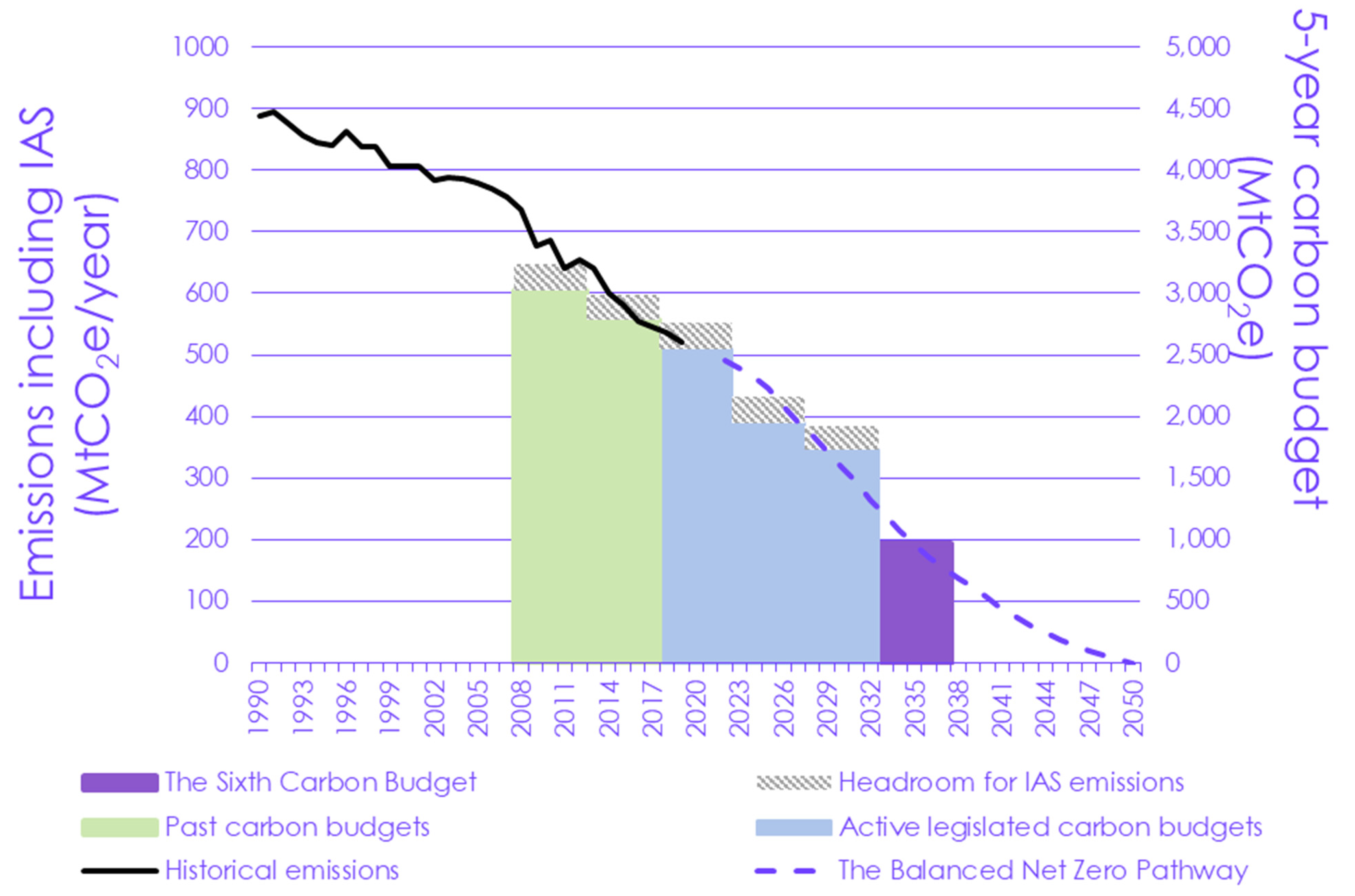
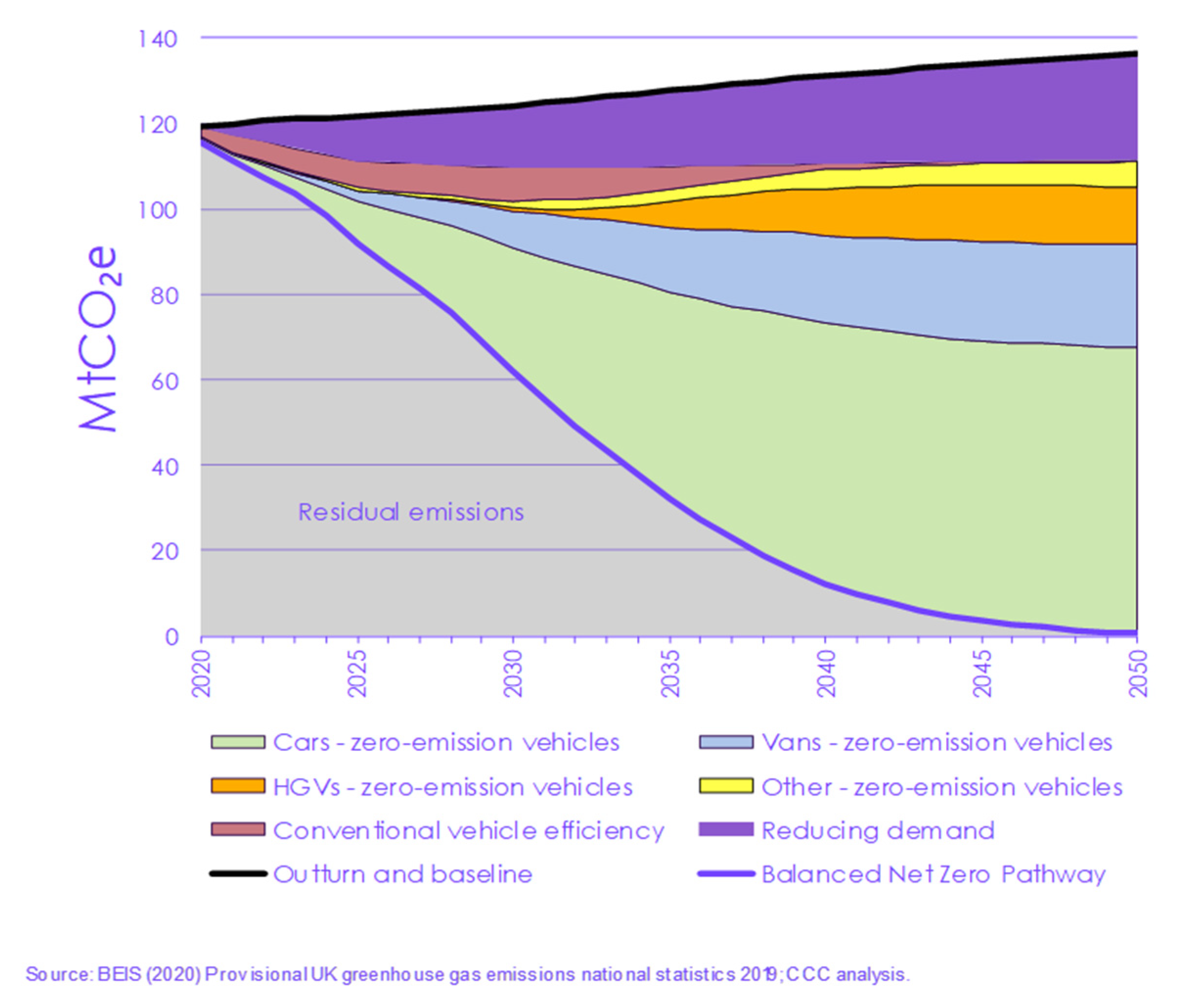
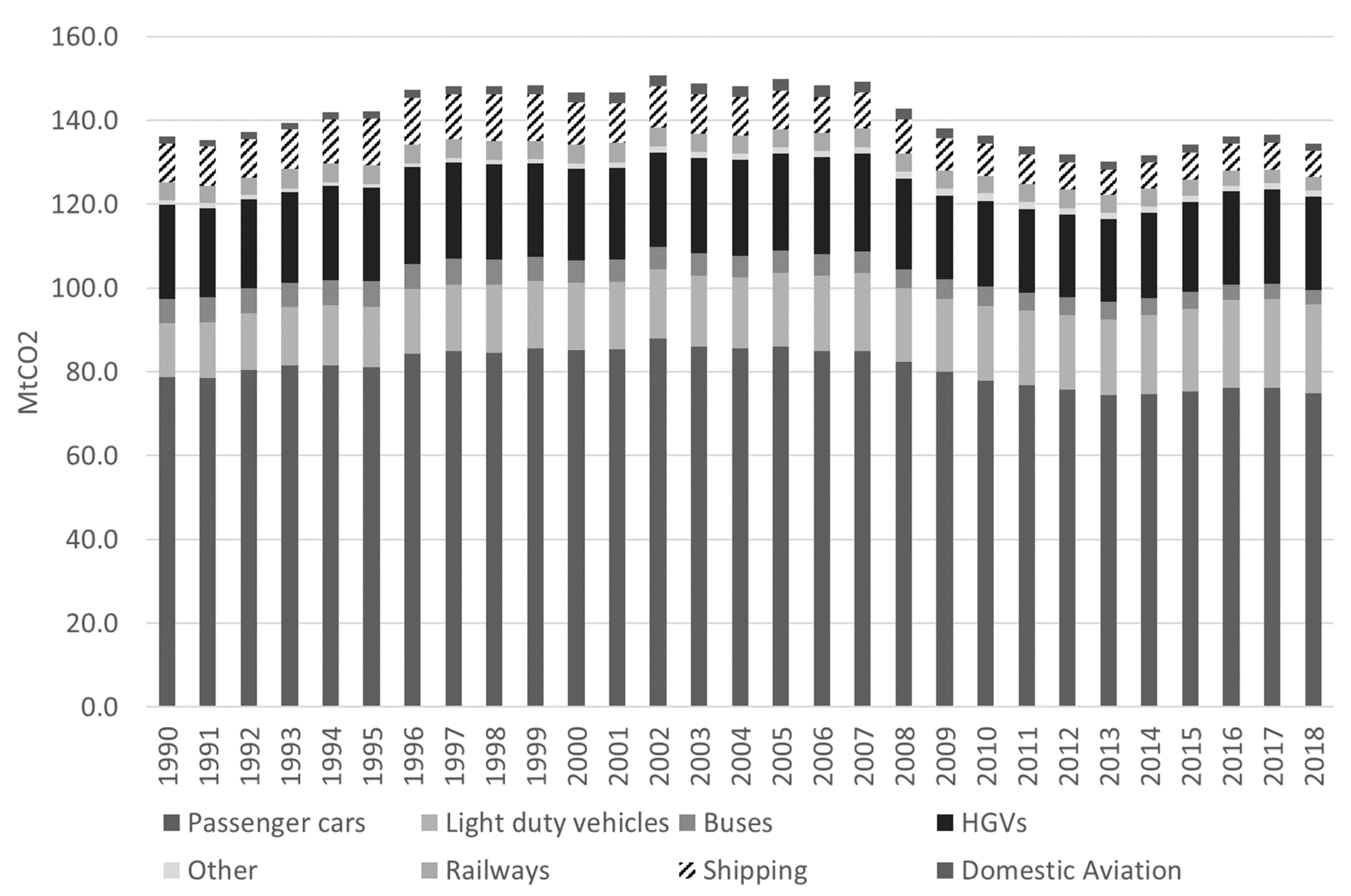
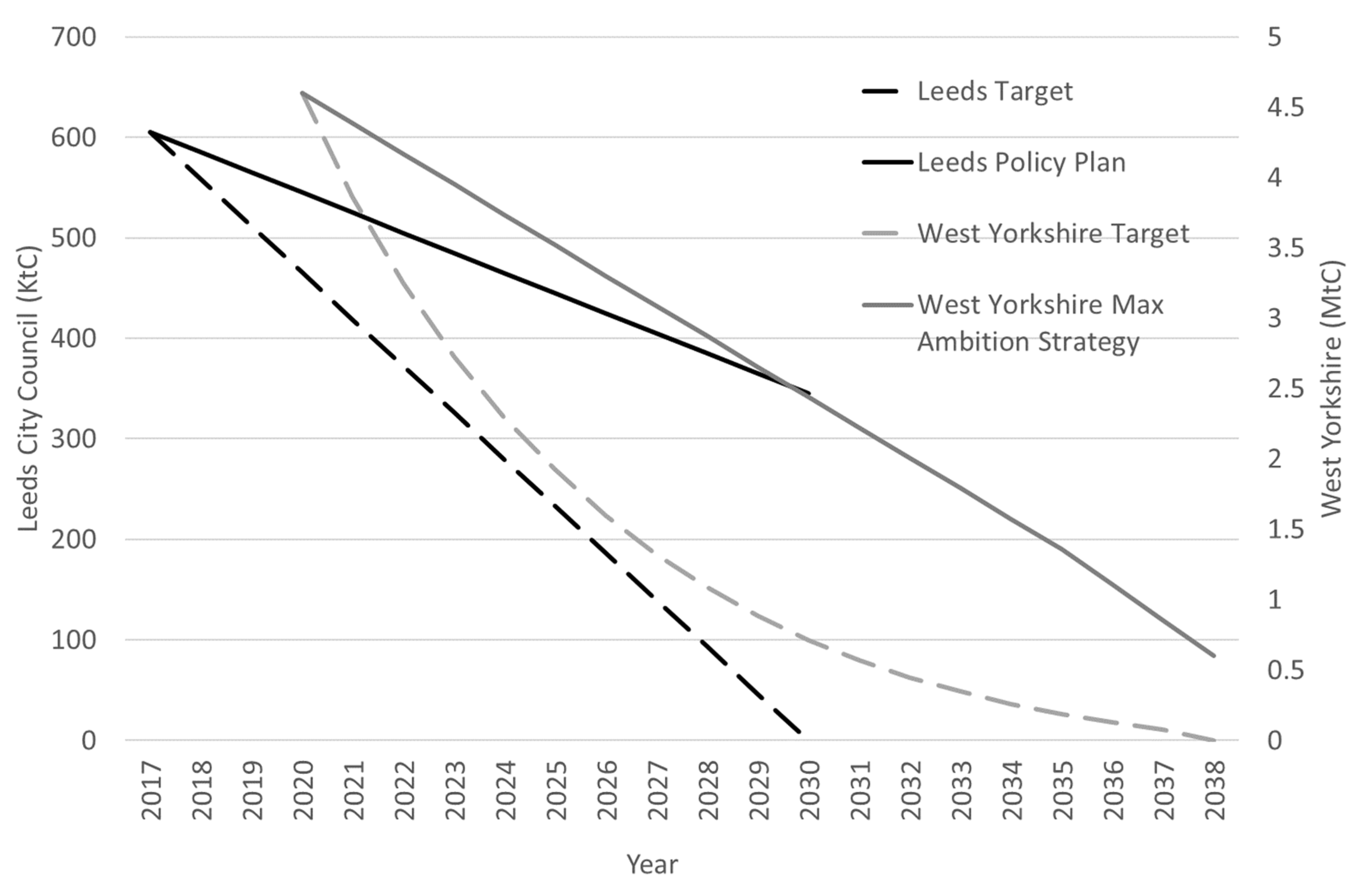
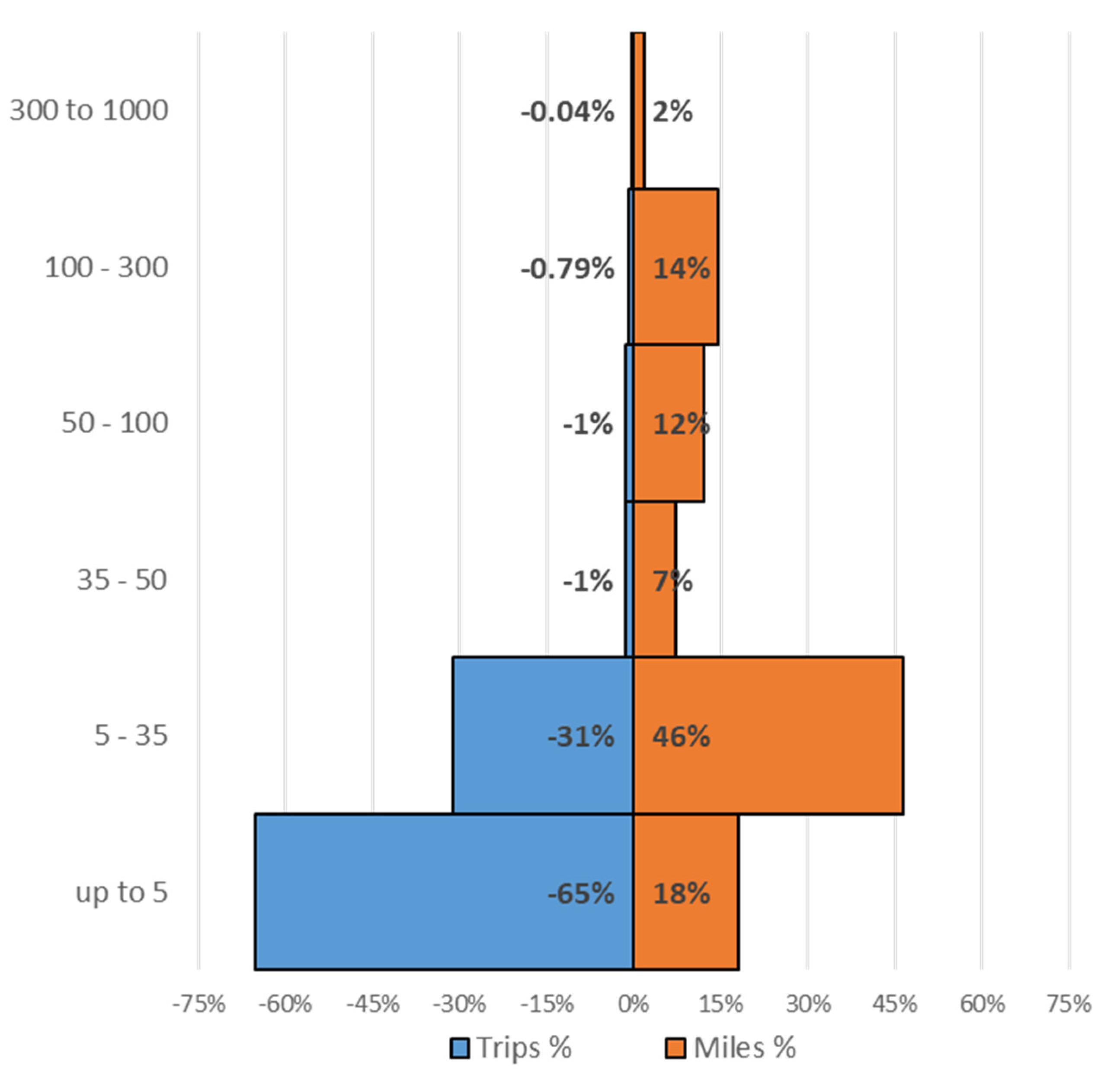
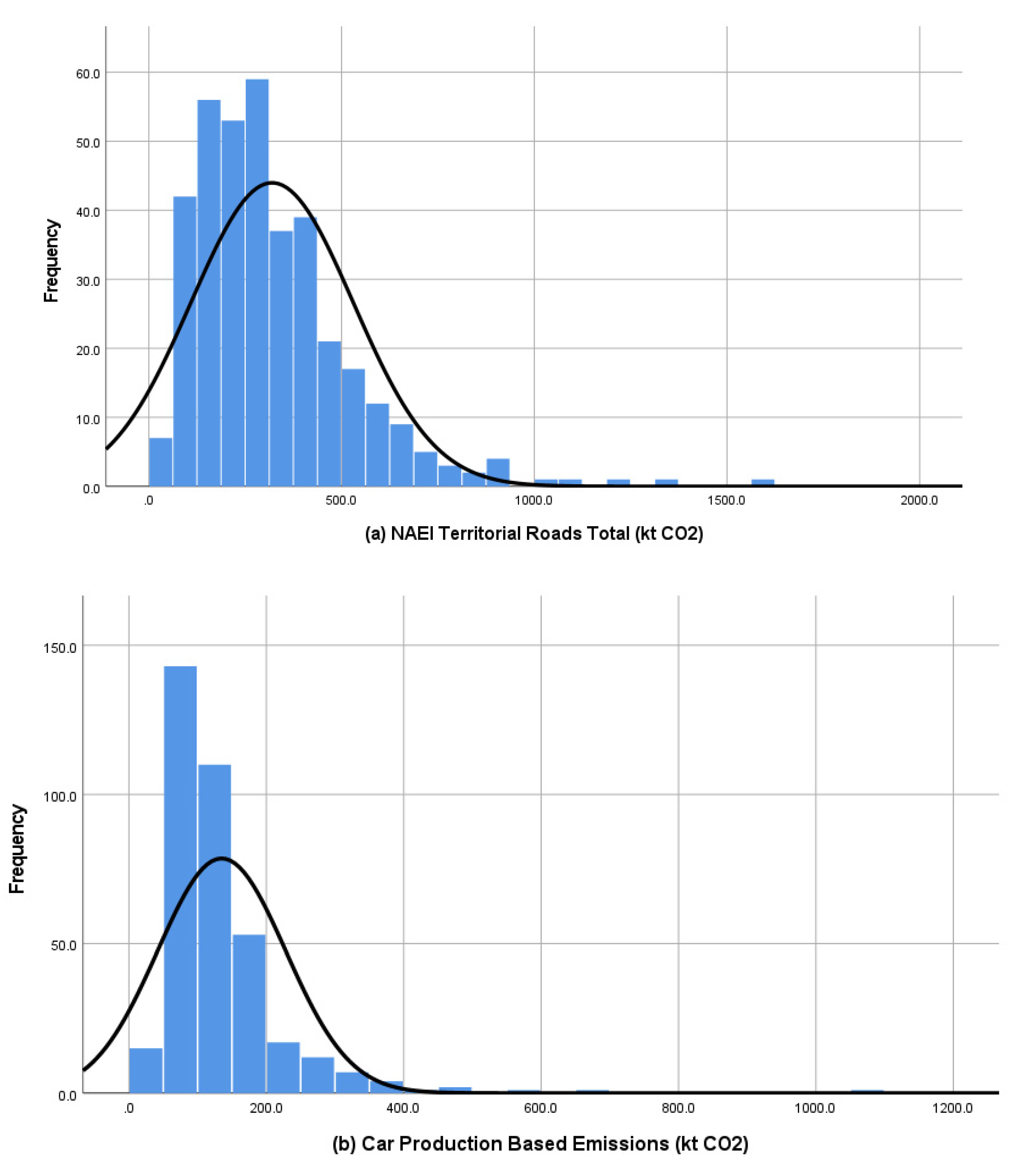
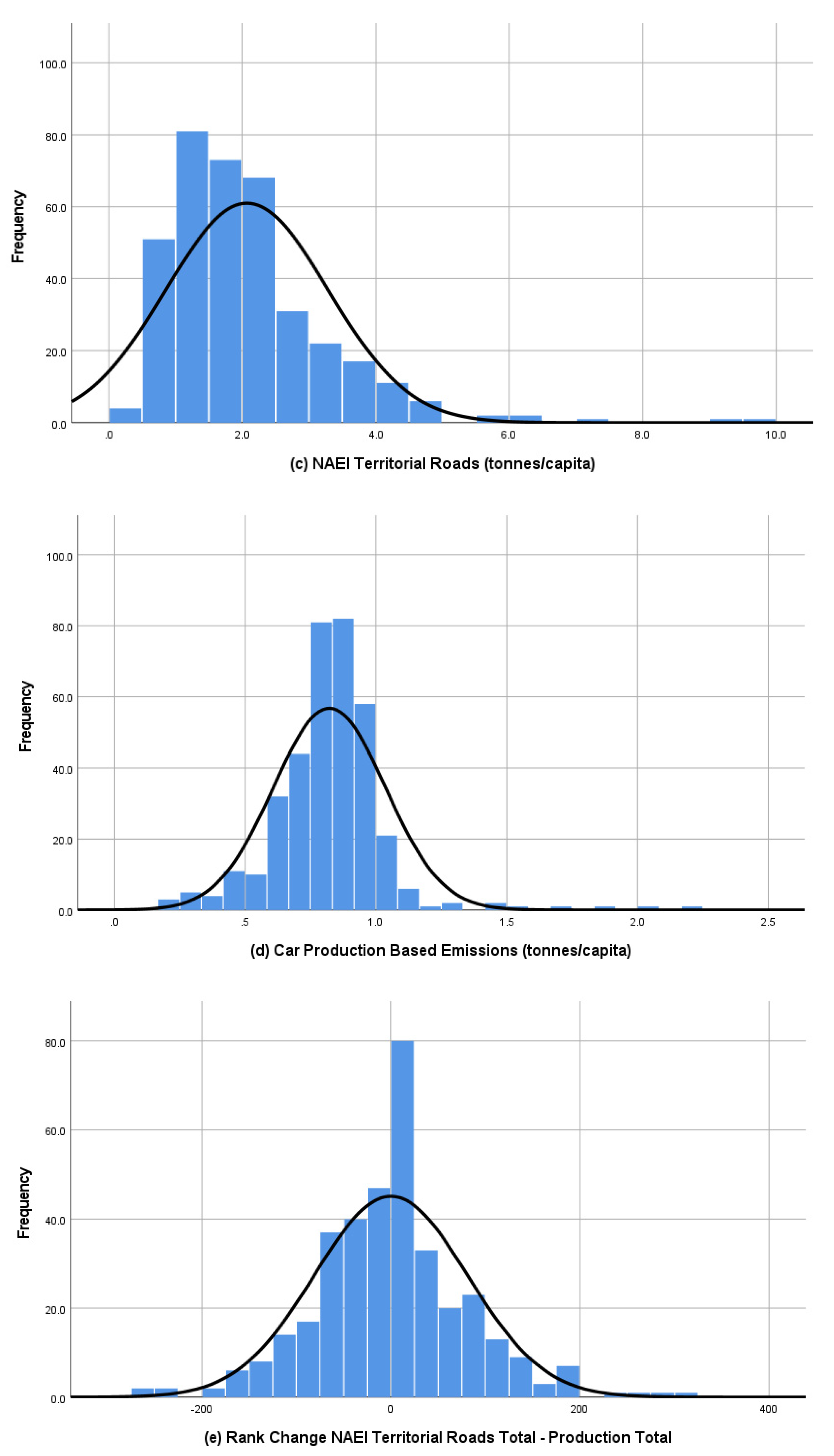
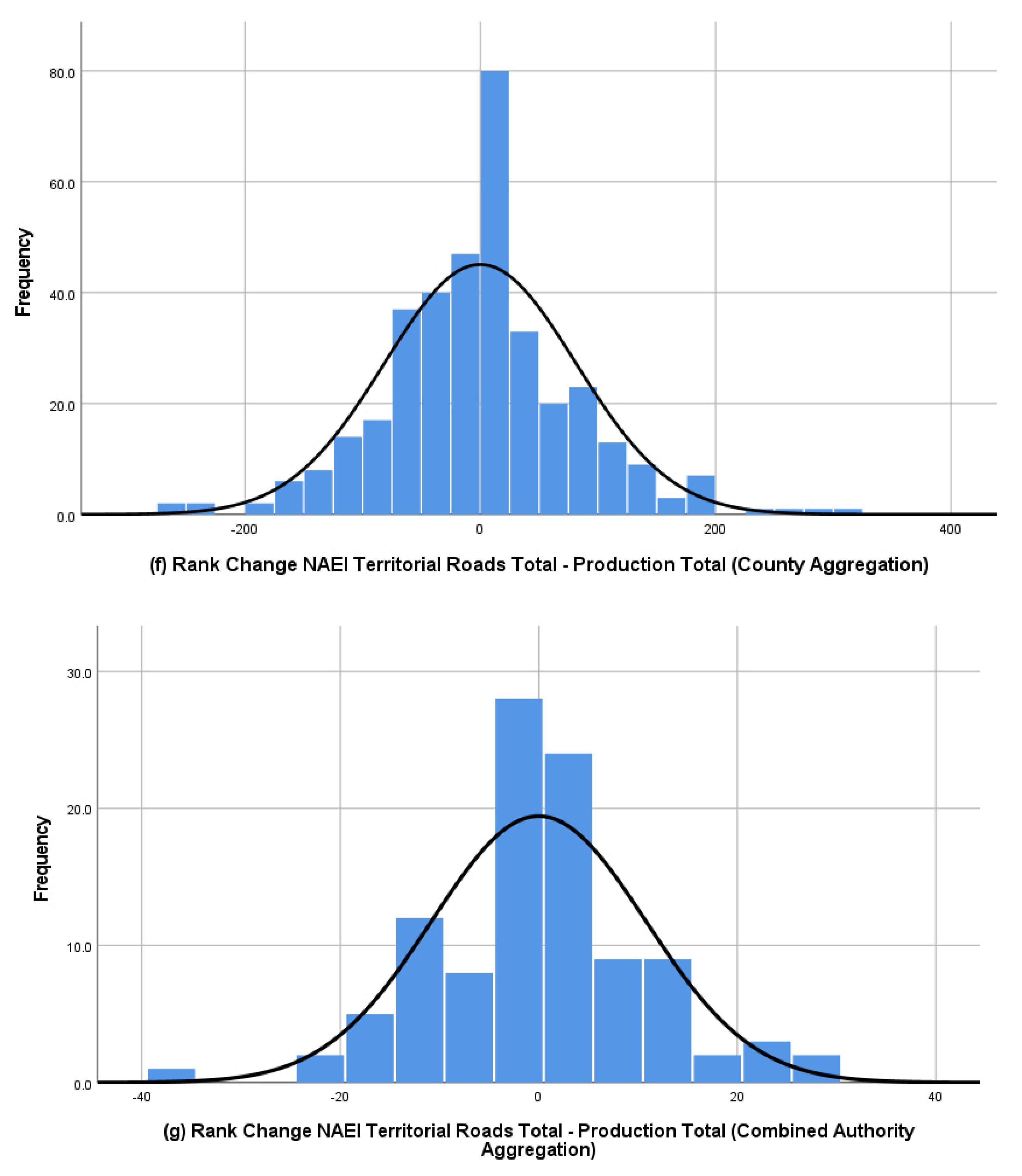
| Abatement Source | 2021–2025 | 2026–2030 | 2031–2035 | 2036–2040 | 2041–2045 | 2045–2050 | Overall 2021–2050 |
|---|---|---|---|---|---|---|---|
| Demand Reduction | 33 (36.3) | 65 (26.8) | 82 (19.9) | 97 (17.6) | 110 (17.3) | 121 (18.1) | 509 (19.5) |
| Electrification Cars | 24 (26.6) | 104 (43.0) | 205 (49.6) | 284 (51.4) | 322 (50.8) | 332 (49.6) | 1271 (48.9) |
| Efficiency Existing fleet | 26 (28.8) | 36 (14.8) | 34 (8.1) | 14 (2.6) | 4 (0.7) | 2 (0.3) | 116 (4.5) |
| Electrification Light Vans | 6 (6.9) | 30 (12.4) | 63 (15.3) | 93 (16.8) | 112 (17.6) | 119 (17.8) | 423 (16.3) |
| Heavy Goods + Other | 1 (1.1) | 7 (2.9) | 29 (7.0) | 64 (11.7) | 86 (13.6) | 95 (14.2) | 283 (10.9) |
| Total Cumulative Abatement in Each Period (MtCO2) | 92 | 242 | 414 | 552 | 633 | 670 | 2602 |
| Topic | Leeds City Council | West Yorkshire Combined Authority |
|---|---|---|
| Geography | Leeds City Council | Leeds City Council, Bradford Metropolitan District Council, Kirklees Council, Calderdale Council, Wakefield Council |
| Population | 793,139 | 2,520,000 |
| Area | 552 sqkm | 2029 sqkm |
| Declaration of Climate Emergency | 27 March 2019 | 27 June 2019 |
| Territorial Surface Transport Carbon Emissions 2018 (NAEI) | 1659.5 MtC | 4064.2 MtC |
| Date for Zero Transport Emissions | 2030 | 2038 |
| Budget Framing | Leeds Climate Commission and PCAN network | Tyndall Centre |
| Technical Reports | https://leedsclimate.org.uk/leeds-carbon-roadmap-2019 (accessed on 1 June 2021) | https://www.westyorks-ca.gov.uk/media/4268/emission-reduction-pathways-report.pdf (accessed on 1 June 2021) |
| Reductions in Car Demand | 30% | 21–38% |
| Increase in Bus Use | 100% | 39% |
| Increase in Cycling | 400% | 2000% |
| Aggregation | N | Standard Deviation | Std Error |
|---|---|---|---|
| Districts (e) | 367 | 81.1 | 4.35 |
| Counties (f) | 168 | 20.8 | 1.60 |
| Combined Authorities (g) | 105 | 10.7 | 1.04 |
| Layer | Fiscal | Regulatory | Infrastructural | P.T. Services | Planning |
|---|---|---|---|---|---|
| National | Fuel Duty Vehicle Excise Duty Company Car Tax | Emission Standards, Charge Point Obligations, Highways England and Network Rail Regulatory Framework | Roads and Rail Investment Strategies Cycling Infrastructure Funding (LCWIP) Major Schemes and City Deals | Funding Framework and Subsidy: evels Regulatory Conditions Green Purchase Subsidy | Planning Policy Framework Housing Targets and Housing Delivery Grants |
| Sub-national | Strategic and Business Case Development | Lobbying and Ticketing Coordination | |||
| Combined authority | Strategic and Business Case Development and Delivery | Bus Franchising Managing Socially Necessary Services Operating Tram Systems Integrating Information/Ticketing | Advisory | ||
| County/Unitary/Met District | Parking Pricing | Introduction of Clean Air Zones, Congestion Charging, Workplace Parking Levy | Strategic and Business Case Development and Delivery Roadspace Allocation (Bus and Cycle Lanes) Parking Provision (Public and On-street) Charge Points | Bus Partnerhsips Managing Socially Necessary Services (if Not C.A.) Integrating Information/Ticketing | Strategic Plans (County) or Local Plans and Planning Approvals |
| Local District | Parking Pricing | Parking Provision (Public and On-street) Charge Points | Local Plans |
Publisher’s Note: MDPI stays neutral with regard to jurisdictional claims in published maps and institutional affiliations. |
© 2021 by the authors. Licensee MDPI, Basel, Switzerland. This article is an open access article distributed under the terms and conditions of the Creative Commons Attribution (CC BY) license (https://creativecommons.org/licenses/by/4.0/).
Share and Cite
Marsden, G.; Anable, J. Behind the Targets? The Case for Coherence in a Multi-Scalar Approach to Carbon Action Plans in the Transport Sector. Sustainability 2021, 13, 7122. https://doi.org/10.3390/su13137122
Marsden G, Anable J. Behind the Targets? The Case for Coherence in a Multi-Scalar Approach to Carbon Action Plans in the Transport Sector. Sustainability. 2021; 13(13):7122. https://doi.org/10.3390/su13137122
Chicago/Turabian StyleMarsden, Greg, and Jillian Anable. 2021. "Behind the Targets? The Case for Coherence in a Multi-Scalar Approach to Carbon Action Plans in the Transport Sector" Sustainability 13, no. 13: 7122. https://doi.org/10.3390/su13137122
APA StyleMarsden, G., & Anable, J. (2021). Behind the Targets? The Case for Coherence in a Multi-Scalar Approach to Carbon Action Plans in the Transport Sector. Sustainability, 13(13), 7122. https://doi.org/10.3390/su13137122






